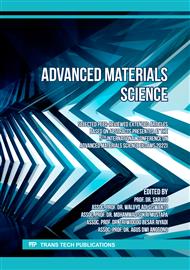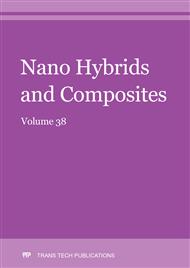[1]
R. A, H. G, and D. M. S. G. Prasad, Design and Optimization of SUAV Empennage,, Int. J. Eng. Res., vol. 4, no. 6, p.309–314, 2015,.
Google Scholar
[2]
M. Hassanalian and A. Abdelkefi, Classifications, applications, and design challenges of drones: A review,, Prog. Aerosp. Sci., vol. 91, no. November 2016, p.99–131, 2017,.
DOI: 10.1016/j.paerosci.2017.04.003
Google Scholar
[3]
E. Sarmiento, C. Díaz-Campoverde, J. Rivera, C. Cruzatty, E. Cando, and E. Valencia, Aero-structural numerical analysis of a blended wing body unmanned aerial vehicle using a jute-based composite material,, Mater. Today Proc., vol. 49, p.50–57, 2022, doi: https://doi.org/10.1016/j.matpr.2021.07.470.
DOI: 10.1016/j.matpr.2021.07.470
Google Scholar
[4]
Y. L. Yap et al., Evaluation of structural epoxy and cyanoacrylate adhesives on jointed 3D printed polymeric materials,, Int. J. Adhes. Adhes., vol. 100, p.102602, 2020, doi: https://doi.org/10.1016/j.ijadhadh.2020.102602.
DOI: 10.1016/j.ijadhadh.2020.102602
Google Scholar
[5]
V. Nagarajan, A. K. Mohanty, and M. Misra, Perspective on Polylactic Acid (PLA) based Sustainable Materials for Durable Applications: Focus on Toughness and Heat Resistance,, ACS Sustain. Chem. Eng., vol. 4, no. 6, p.2899–2916, Jun. 2016,.
DOI: 10.1021/acssuschemeng.6b00321
Google Scholar
[6]
H. Li, B. Liu, L. Ge, Y. Chen, H. Zheng, and D. Fang, Mechanical performances of continuous carbon fiber reinforced PLA composites printed in vacuum,, Compos. Part B Eng., vol. 225, p.109277, 2021, doi: https://doi.org/10.1016/j.compositesb.2021.109277.
DOI: 10.1016/j.compositesb.2021.109277
Google Scholar
[7]
J. S. Shim, J.-E. Kim, S. H. Jeong, Y. J. Choi, and J. J. Ryu, Printing accuracy, mechanical properties, surface characteristics, and microbial adhesion of 3D-printed resins with various printing orientations,, J. Prosthet. Dent., vol. 124, no. 4, p.468–475, 2020, doi: https://doi.org/10.1016/j.prosdent.2019.05.034.
DOI: 10.1016/j.prosdent.2019.05.034
Google Scholar
[8]
ASTM D638-03, Standard Test Method for Tensile Properties of Plastics. West Conshohocken, PA: ASTM International, (2014).
Google Scholar
[9]
Lasikun, D. Ariawan, E. Surojo, and J. Triyono, Effect of fiber orientation on tensile and impact properties of Zalacca Midrib fiber-HDPE composites by compression molding,, AIP Conf. Proc., vol. 1931, no. February, 2018,.
DOI: 10.1063/1.5024119
Google Scholar
[10]
N. Maqsood and M. Rimašauskas, Delamination observation occurred during the flexural bending in additively manufactured PLA-short carbon fiber filament reinforced with continuous carbon fiber composite,, Results Eng., vol. 11, 2021,.
DOI: 10.1016/j.rineng.2021.100246
Google Scholar
[11]
S. J. Park et al., Tensile test of additively manufactured specimens with external notch removed via laser cutting in material extrusion,, Polym. Test., vol. 110, p.107581, 2022, doi: https://doi.org/10.1016/j.polymertesting.2022.107581.
DOI: 10.1016/j.polymertesting.2022.107581
Google Scholar



